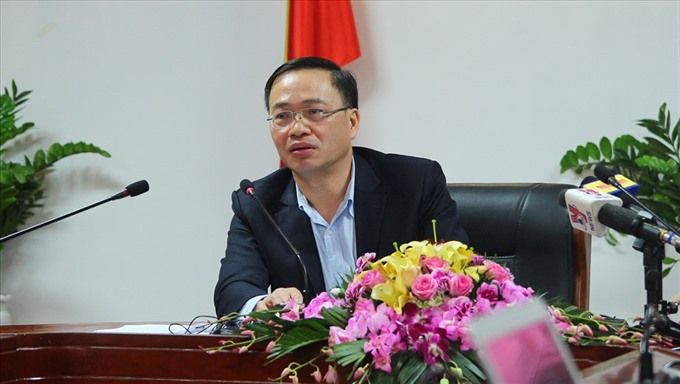 Economy
Economy

The average electricity retail price officially increased by 6.08 per cent, from VNĐ1,622 (7.1 US cents) to VNĐ1,720 per kWh (7.6 cents), on December 1 after three years being kept unchanged.
 |
| Nguyễn Anh Tuấn, director of the Electricity Regulatory Authority of Việt Nam |
On December 1, the average electricity retail price officially increased 6.08 per cent, from VNĐ1,622 (7.1 US cents) to VNĐ1,720 per kWh to (7.6 cents). This marks the first adjustment in power prices for three years, but has raised concerns among many sections of society. Nguyễn Anh Tuấn, director of the Electricity Regulatory Authority of Việt Nam (ERAV) under the Ministry of Industry and Trade (MoIT), spoke to the media to clarify some of the issues.
On what basis has the electricity price been adjusted?
The increase is based on Decision 24/2017/QĐ-TTg issued by the Prime Minister on June 30, 2017, which deals with the mechanisms for adjusting average electricity retail prices; and Decision 28/2014/QĐ-TTg dated April 7, 2014, which deals with the retail price scheme. It is also based on electricity production costs to be independently audited by the ministries of Finance and Industry and Trade.
A rise in input prices of coal and gas, for instance, has also contributed to the hike. Based on the audited business results of EVN, the MoIT collected opinions from the ministries of Finance, Planning and Investment and the Việt Nam Chamber of Commerce and Industry (VCCI) on the power price adjustment and submitted it to the PM for approval. On November 30, 2017, the MoIT issued Decision 4495/QĐ-BTC on the price adjustment.
EVN calculated the price based on factors affecting input costs in power production.
Specifically, the price of coal sold to EVN rose 5.7 per cent from December 24, 2016. Gas prices from the Nam Côn Sơn and Đại Hùng fields also rose by two per cent according to contracts EVN has signed with the Việt Nam National Oil and Gas Group (PetroVietnam). For hydropower, EVN’s costs rose to VNĐ11.35 per kWh from September 1, 2017.
The national utility also had to pay the exchange rate differential when buying electricity from foreign countries in 2016.
Does the latest price adjustment apply to the poorer sections of society as well?
It will not affect poor households. They will see very little or no increase in power prices. According to our calculations, households which consume below 50kWh per month would pay an extra VNĐ3,250 per month, while those consuming below 100 kWh per month would pay an additional VNĐ6,600.
The price adjustment has taken into account the possible impacts on poor and other welfare policy beneficiaries. They will be supported with VNĐ51,000 for every 30 kWh per month.
According to the finance ministry, total financial support from the State Budget for poor and welfare beneficiary households in 2015 was VNĐ2.3 trillion. It is estimated that an additional VNĐ100 billion will be disbursed this year towards supporting the disadvantaged sections against the latest electricity price hike.
Why was this price adjustment made in the last month of the year? Will it affect the CPI and exert pressure on inflation?
The price hike followed the PM’s Decision 24/2017/QĐ-TTg. Relevant data for the first months of the year, including power output, input costs, exchange rate and other costs were taken into consideration.
The Ministry of Planning and Investment has assessed impacts of the 6.08 per cent increase in power prices on the industrial production index (IIP), CPI and GDP. The ministry has said the adjustment was small and would make the IIP rise by 0.07 per cent, the CPI by 0.08 per cent and reduce GDP by 0.014 per cent.
The MoIT will co-operate with relevant ministries in preventing price hikes in other products following the electricity price increase.
Many experts are worried that the electricity price rise could affect producers. What do you think?
The electricity price rise is necessary to ensure profit for power production. This could help promote sustainable energy development, ensuring increasing electricity demand.
It should also ensure profit for power trading units, re-investment in power development and encourage the participation of other economic actors in the electricity sector.
The latest price adjustment continues to follow the target of having retail power prices decided under market mechanisms.
For the manufacturers, the retail power prices will be divided into standard, peak and off-peak hours. Manufacturers that use a lot of electricity during peak hours will have to pay more. This could help reduce peak hour demand of the total power system.
Therefore, the effects of the power price rise would be different for businesses with different consumption patterns.
Will the increase attract foreign investors into the power sector?
One of the principles for attracting foreign investors is that pricing is based on input costs. When the mechanism is suitably adjusted, I believe that the electricity sector can attract foreign investors.
The Ministry of Industry and Trade has been actively developing a competitive wholesale power market to attract investment.
We also calculated wind and solar power for the electricity plan for this year. However, wind power would be more expensive than current retail prices. — VNS
Box:
After the average electricity retail price increase on December 1, the power tariffs for different customer groups will rise as follows: 5.7 per cent for businesses, 1.4 per cent for manufacturers; VNĐ3,250 per month for households consuming less than 50 kWh; VNĐ6,600 per month for those consuming less than 100kWh; VNĐ23,000 per month for consumers of less than 300 kWh; and VNĐ34,800 per month for those consuming less than 400 kWh.
Currently, some 5.4 million of households consume 50-100 kWh a month, accounting for 22.7 per cent of the country’s total; 4.1 million households, or 17 per cent, consume less than 50 kWh a month; 5.2 million households consume less than 200 kWh a month. — VNS




